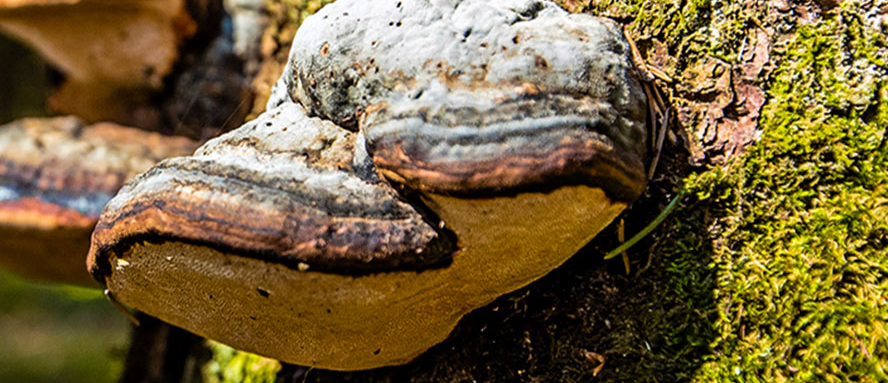 Stora Enso measures the indirect biodiversity impact of its forest operations in Sweden through green audits. In 2020, the audits showed that in several categories 90% of the work complied with Stora Enso’s standards for biodiversity and sustainability. The audits are even used to improve biodiversity, for example by focusing on sensitive areas and creating high stumps, which provide important habitats for many threatened species.
Stora Enso measures the indirect biodiversity impact of its forest operations in Sweden through green audits. In 2020, the audits showed that in several categories 90% of the work complied with Stora Enso’s standards for biodiversity and sustainability. The audits are even used to improve biodiversity, for example by focusing on sensitive areas and creating high stumps, which provide important habitats for many threatened species.
The audits evaluate how well Stora Enso follows its standards for biodiversity and sustainable forest management in its forest operations in Sweden. Each summer, external consultants audit 12 different areas at 120 randomly selected sites in Stora Enso’s own forests throughout the country. One audit takes roughly half a day. The audits are based on Stora Enso’s instructions on environmental considerations during harvesting, in line with forest certification scheme directives and the Swedish forest sector goals.
“Achieving 90% is really good – a high class level. It is almost impossible to reach 100% as we work in a living environment in different conditions and changing landscapes throughout the year,” says Robert Berg, Forestry and Sustainability Specialist at Stora Enso.
Driving improved performance
The 60 field day investment pays off by helping Stora Enso’s forest professionals to focus on the right things. “In the audits, we follow up many important forest structures and biodiversity functions, which further improves our performance in these areas and makes a tremendous impact,” explains Hanna Staland, Sustainability Specialist at Stora Enso.
“Stora Enso has worked for many years with Green audits to measure and quantify the impact of forestry operations on biodiversity during harvesting. Taking into account the ambitious set-up through structured feedback sessions with the harvesting teams where audit results are communicated, as well as the continuous efforts taken to enhance the methodology and precision of the measurements, I would argue that Stora Enso should be considered a top player in this aspect of sustainability,” says Martin Pilstjärna, Ecologist, external consultant and one the auditors. “The results from the audits are used as a baseline when selecting and formulating relevant focus areas and target levels for further improvements in sustainability. This is a very good example of adaptive management within sustainability.”
Promoting biodiversity through dead wood
There is a strong link between biodiversity and dead wood. In 2020, new dead wood measurement methods proposed by the Swedish University of Agricultural Sciences (SLU) were included in the green audits. “We started to measure the volume of dead wood using sample plots. We also monitor to what extent stems are degraded and evaluate if we have caused any damage to the decaying stems during forest operations,” says Berg. Over time this will give Stora Enso a very accurate estimate of the volume and quality of dead wood.
To further increase the amount of dead wood, Stora Enso creates high stumps on harvesting sites. In Sweden, the target is to leave at least three high stumps per hectare, representing different tree species. “We can see a positive trend now with 95% of audited sites meeting this target,” claims Berg.
Focus on sensitive areas
Based on the audits, Stora Enso can make a step change with better planning and paying attention to how teams work close to sensitive areas. “Our aim is to improve our work when it comes to soil damage and working close to water. We will continue to focus on those areas,” says Staland.
The most important damage prevention is to not cross or pass a stream. The green audits highlight that there is a need to continue to improve performance related to the quality of the crossings. “Crossings that are well planned have much lower impact than crossings that are not planned or identified by the forest planner,” explains Berg.
Training and development for biodiversity management
Stora Enso’s Forest team in Sweden has begun making corrective action. “Regarding soil damage, we will educate harvesting teams this spring. Dead wood is something that we will discuss more in practice in the field and when we audit newly harvested sites we will give harvesting teams feedback on their performance. We also have a master’s student who is evaluating forest planners’ work and the performance of the harvesting teams when it comes to working with sensitive areas,” explains Staland.
Green audits have been carried out for over 25 years on forest sites where Stora Enso has recently done final felling. In recent years, thinning sites have also been included in the audits. Today, all sites are selected randomly. The following areas are evaluated: trees with high conservation value, retention trees, treeless areas, high stumps, low-productive forest land, consideration patches, buffer zones, dead wood, crossings, archaeological monuments, cultural remains, tracks and trails and the number of deciduous trees left after thinning.
Green audits are one example of quality assessments carried out in countries where Stora Enso operates. But the main objective is always the same – to audit how the environment is taken into account during both the planning and execution of forestry actions and to continuously improve our efforts.
www.storaenso.com


















































































